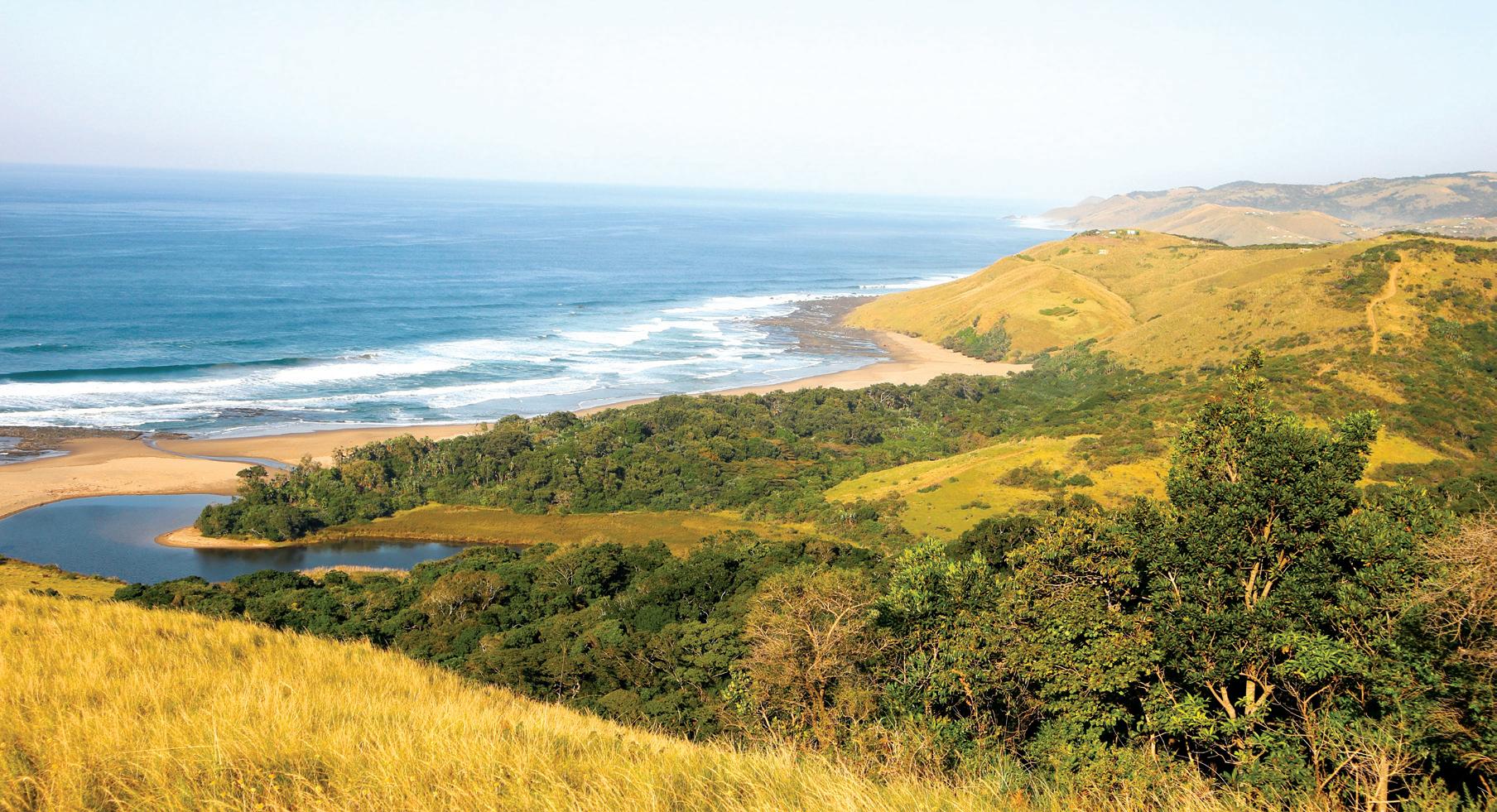
3 minute read
EXPANDING OUR FOOTPRINT
The NSRI will soon be reopening Station 28 (Port St Johns) and launching two lifeguard stations at Kei Mouth and Mdumbi Beach to provide a much-needed rescue service along one of South Africa’s most picturesque – and dangerous – coastlines, the Wild Coast. By Wendy Maritz
THE WILD COAST is a 250km stretch of coastline in the Eastern Cape that extends from Kei Mouth near Morgan Bay up to the Mtamvuna River close to the province’s border with KwaZulu-Natal. It’s an area of breathtaking natural beauty – desolate, rustic beaches, precipitous craggy cliffs, secluded bays, rolling green hills and river valleys – that attracts droves of holidaymakers eager to trade busy city life for a week or two of coastal country living.
The Wild Coast is, however, largely unattended by a permanent NSRI service, with Station 7 (East London) and Station 32 (Port Edward) flanking the region and responding to callouts when required.
‘The need for NSRI to provide support to a stretch of coastline this long is unquestionable,’ says NSRI Operations Manager Bruce Sandmann. ‘In past years, a rescue station was based in Port St Johns, but it was unable to maintain sufficient crew to keep it operational,’ he adds.
Recent drowning incidents, yachts requiring assistance and vessels in distress off the Wild Coast have confirmed the need for a Sea Rescue presence, so the decision was made to reactivate the station at Port St Johns as well as establish two lifeguard stations in strategic positions along the coast: Kei Mouth (Station 47) and Mdumbi (Station 49), near Coffee Bay.
In the run-up to the re-opening of the station at Port St Johns at the end of November, five NSRI crew have been trained to operate vessels out of the river mouth to assist those in difficulty at sea. Port St Johns will operate as all other NSRI stations do, with ongoing training, development and support from head office. The lifeguard stations were also earmarked to be up and running by the end of November, in time for the holiday season.
LIFEGUARD STATIONS
Lifeguard stations are usually launched as an NSRI-municipal collaboration, with members of the local community given the necessary training by the NSRI, and the relevant municipality providing equipment and remuneration. The Wild Coast has a number of challenges in this regard, so the NSRI presented a proposal to the municipality for a strategic initiative that would see the NSRI, local hotels, rate payers and the community assisting to subsidise the lifeguards with the equipment and remuneration needed to have a continued presence on the beaches during the holiday season and beyond.
‘This initiative has proven to be very successful in other regions in the country and we believe it will support the community to provide better safety on the beaches along the Wild Coast,’ Bruce explains.
The plan is to have 20 lifeguards at Station 47 (Kei Mouth), who will cover Kei and Morgan’s Bay, and 22 lifeguards at Station 49 (Mdumbi), who will cover Coffee Bay and Mthatha River.
The stations should be operational by the start of the summer season, and all training will be ongoing. So far, Bruce has been impressed by the enthusiasm and drive shown by the various crews in training.
NSRI CEO Dr Cleeve Robertson says, ‘The Wild Coast is a special place, with spectacular scenery, vibrant oceans and beautiful beaches, but it is called “wild” for a reason, not least of which the many rivers that run into the sea and the ocean itself. The coastline is dynamic and hostile, not kind to its many visitors and users – fisherman, lobster wranglers, surfers, boaters and swimmers – and so the necessity for rescue services here is a no-brainer, not only for safety reasons but as a safety net for an emerging economy. We are committing to support communities on the Wild Coast to evolve services from our experience but using their local knowledge and talent to create a sustainable network of facilities to deliver a range of drowning-prevention and rescue services.’
SAFETY FIRST
Members of the public are urged to take every precaution around water. Lifeguards are on the beach to keep people safe. Listen to their advice and adhere to the rules of the beach. Please follow these general safety rules: › Avoid swimming where no lifeguards are present. › Never swim under the influence of alcohol. › Supervise children, in even shallow surf. › Swim in between the lifeguard flags, as these areas are deemed safe. › Never swim alone – always swim with a buddy. › Don’t swim in regular clothing. › Learn rip current safety so you know what to do if you get caught in one. Go to www.nsri.org.za/ water-safety/all-about-rip-currents.









